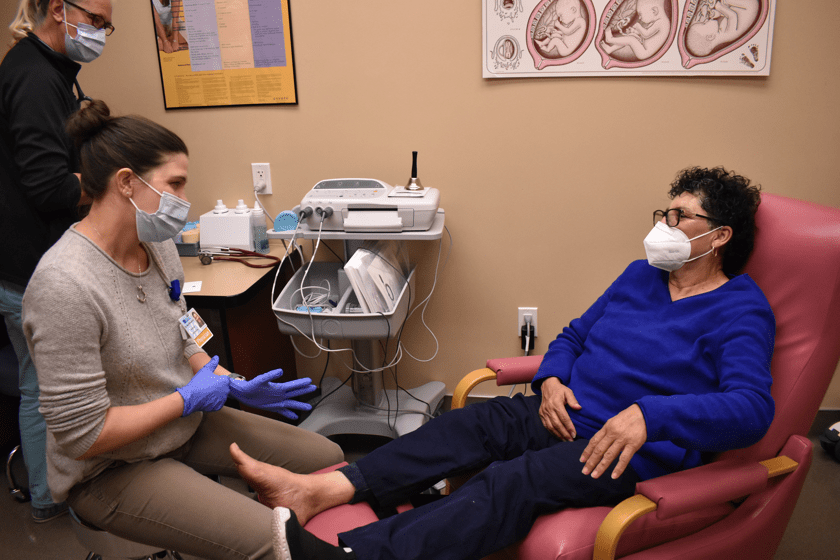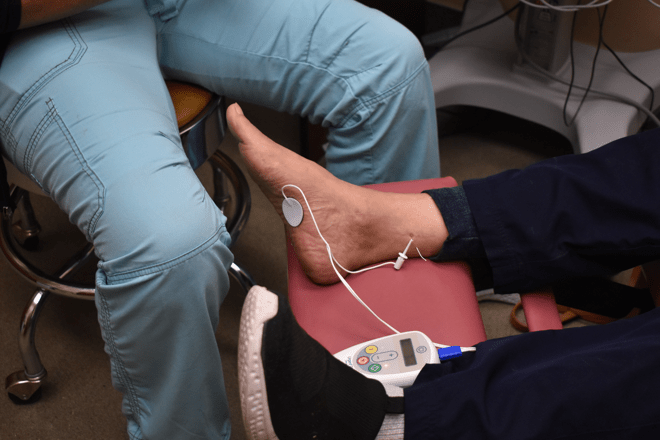SLVH's New Treatment for Overactive Bladders
San Luis Valley’s Women’s Health Clinic has new, non-invasive, way to treat overactive bladders.
Rita Montoya, a patient of Dr. Amy Robertson at the SLVH Women’s Clinic, was starting to think the only way to help her overactive bladder was surgery. But Dr. Robertson suggested the Posterior Tibial Nerve Stimulation (PTNS) treatment instead and it’s helped Rita immensely.

Overactive bladders can be caused by a variety of factors, and affect more women than men. Symptoms can include feeling a sudden urge to urinate that’s difficult to control, incontinence, and frequent urination, particularly if someone has to wake multiple times in the night to go to the bathroom.
For Rita, she said the two biggest problems she had with her overactive bladder was her inability to sleep throughout the night and exercising. She couldn’t walk or go anywhere without worrying about getting to the bathroom in time if the urge hit her.
Needless to say, having an overactive bladder can be disruptive to a person’s life and, according to the Mayo Clinic, can cause anxiety and depression.
However, people in the San Luis Valley with overactive bladders have more options with SLVH’s newest treatment offered.
PTNS is non-invasive and can treat overactive bladders by stimulating a nerve that runs through the leg.

The treatment involves a needle electrode (the size of an acupuncture needle) being inserted near the patient’s ankle. Then, the clinician will attach the stimulator. The patient will sit for about 30 minutes as the stimulator sends out gentle impulses.
Rita said she only feels subtle pulses in her foot, otherwise there’s no pain or discomfort as she waits.
As far as results go, Rita said she’s only had a positive experience.
“I would have accidents sometimes, but [after PTNS], I can go walking and I don’t have to worry about it. It’s pretty awesome. And the first night I slept through the night, I woke up feeling refreshed. So now I tell everyone about it.”
The treatment is performed once a week for 12 weeks. Afterwards, occasional treatments may be necessary to sustain results. Rita is currently coming in for treatment about once a month.
“For me, it’s a great alternative to surgery, it’s non-invasive, and it’s really worked for me.”